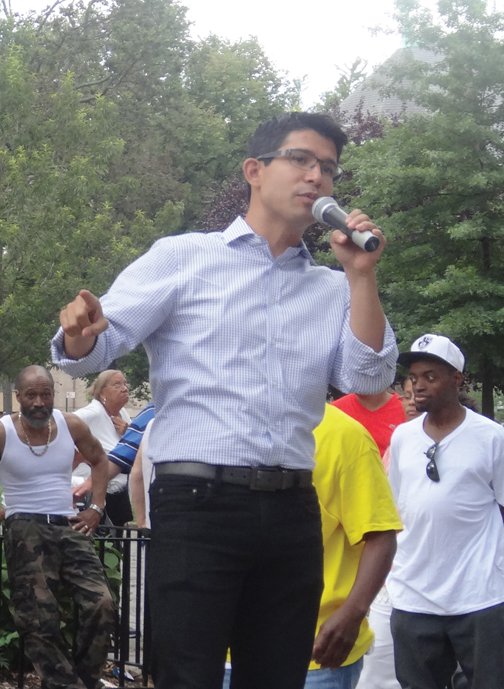I’m proud of Red Hook. We get good results when we work together. In the last months, we looked to the future, learned from the past and planned a more resilient community.

For example, at the Miccio Center, we learned about new ways of building integrated flood protection. People from all over Red Hook reaffirmed that resilience isn’t just about buildings and flood plans – it relies on people who know how to support each other. When city representatives came to propose a new street trolley or to ask for ideas about the planned citywide ferry service, we told them what Red Hook requires. If they’re smart, they’ll listen to us and make good decisions.
When bad city planning decisions of the past affected us, we responded with action. Lead contamination from old Red Hook factories requires a federally guided cleanup of the ball fields. We’ll lose precious recreational space for quite a while, but it will all come back better – and safer – than before. In the process, we established new ways of working with the Parks Department on community outreach.
When the restoration of our Sandy-damaged Senior Center was intolerably delayed, Red Hook seniors stood up and called for accountability and progress. I witnessed them change the way city government engages our community. Sometimes, it takes the wisdom of an older generation to put some sense in today’s city agency conversations.
Change is happening right before our eyes. Construction projects dot Red Hook, most of them “as of right,” meaning builders can proceed without City Council approval by using established zoning. Red Hook is changing for sure. Luckily, our community is more engaged than ever in determining how that change will take place.
Which brings me to a topic that’s been in the news recently, but was a year in the making – a large development proposed for 141 Conover Street. Last May, a private developer pitched an eight-story, for-profit, 200-bed nursing home west of Van Brunt in a mandatory flood evacuation zone. In this case, I knew I’d have the decisive voice on whether or not the project went forward because it depended on re-zoning historically heavy manufacturing property to residential use. Therefore, City Council oversight was triggered.
I took the decision to support or oppose this development very seriously. At many meetings beyond the required land use hearings, I listened to the developer, Red Hook residents, workers, resilience experts, and local business operators.
Weighing all the benefits and risks, the project proved to be unsafe and wrong for Red Hook’s long-term best interests.
It’s in a place where streets are often impassable, where public transit is distant, and where Hurricane Sandy knocked out power for five long weeks. It’s one thing to close an office or cancel shifts at a factory. Employees can stay home. Equipment can be replaced. But elderly patients there would be trapped if they sheltered in place, or traumatized if forced to evacuate.
I also saw this development’s placement as directly contrary to our community’s resilience planning. We all know Red Hook needs better access to health services and more facilities for the long-term care of elderly people with severe medical needs. We all want smart investment in our community, and to preserve Brooklyn jobs. The general benefits of nursing facilities are obvious. But the risks to patients and workers on Conover Street were not acceptable.
In short, I could not support placing nursing home patients and their caregivers in danger.
And so, in the City Council, I led the decision to deny the developer’s rezoning application. In today’s Brooklyn, in our Red Hook, essential medical services and the jobs they produce must be sited intelligently. If we fail to make good decisions that support resilience, future Red Hook residents will be forced to take action correcting our failures.
Carlos Menchaca is the City Councilmember for the 38th District, which includes Red Hook








